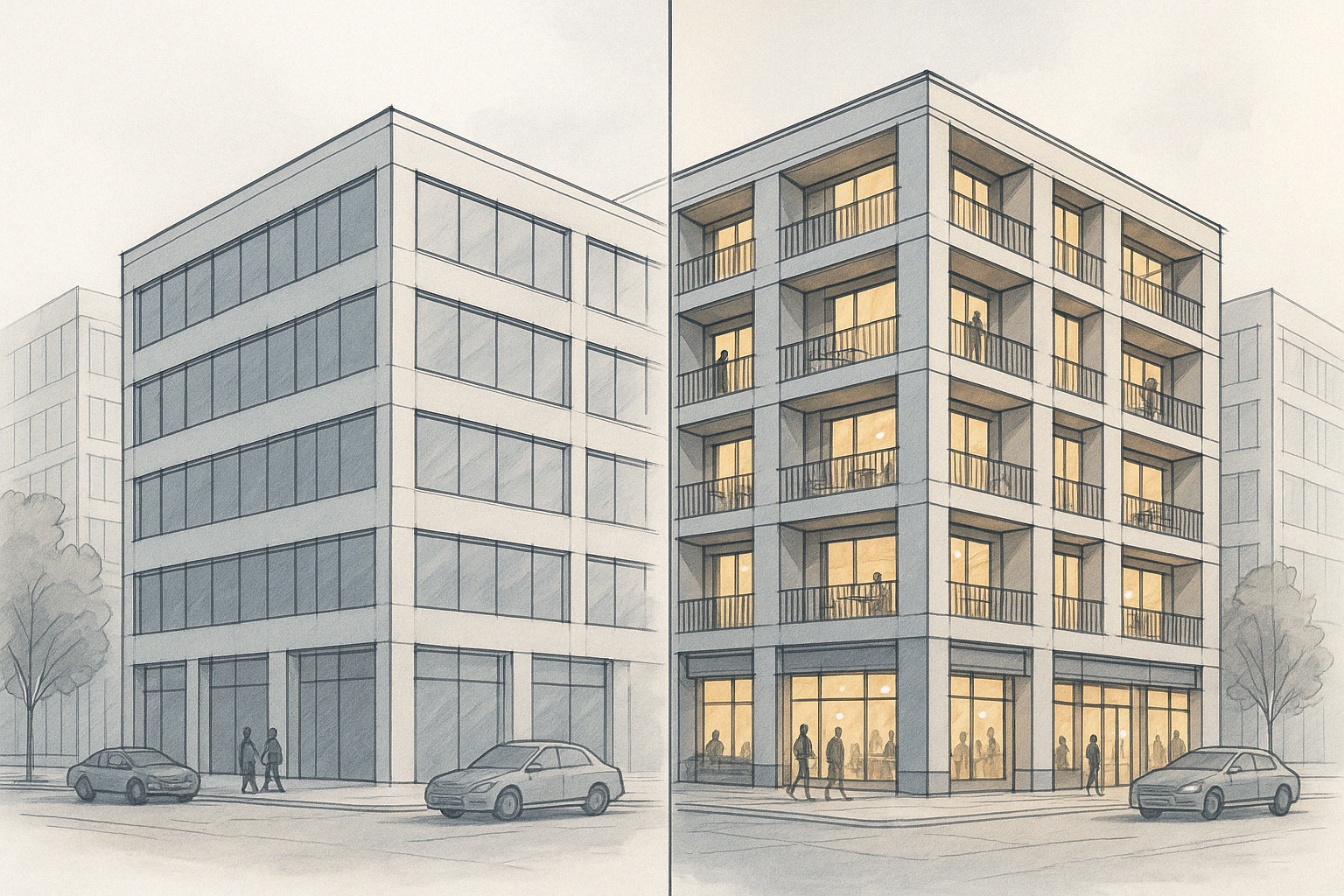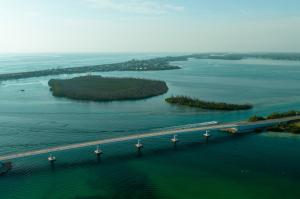“If I have a warehouse that rents for $1 a square foot plus triple nets, and I have another warehouse that rents for the exact same price, but one is more efficient, my value is higher...
Office-to-Residential Conversions Reshape D.C.'s Urban Landscape




Washington D.C. is experiencing a significant transformation in its commercial real estate landscape as developers increasingly convert underutilized office buildings into residential spaces. This trend reflects not only strategic market adaptation but also creates new opportunities to revitalize the urban core of the nation’s capital.
“Real estate evolves over time. It changes. It shouldn’t be something that stays the same forever. Changes are inevitable,” observes Josh Simon, Principal at CPG, who has been at the forefront of this evolution in the District.
The driving force behind these conversions is a pronounced split in the office market. “The demand for Class A trophy space is high, but then everything else is significantly lower. There’s simply not enough demand there,” Simon explains. This bifurcation has left owners of aging office properties searching for viable alternatives, with residential conversion emerging as an increasingly attractive option.
The statistics underline the scale of this transformation. D.C. currently leads the nation in office-to-apartment conversions with approximately 6,500 units in progress—a direct response to rising office vacancy rates paired with persistent housing shortages. The pandemic-accelerated shift to remote and hybrid work models has permanently altered office space requirements, accelerating the obsolescence of older buildings while simultaneously increasing demand for quality residential options.
For developers and investors, the financial calculus is complex but increasingly favorable. “Developers need the opportunity to make these properties interesting. And of course, in order to do that, the value has to be there,” Simon notes. The equation includes multiple variables: acquisition costs that have adjusted downward, building characteristics that either facilitate or complicate conversion, regulatory incentives including conditional tax abatements, and location premiums near transit and amenities.
Construction economics also plays a critical role in decision-making. “We’ve seen a softening on ground-up multi-family development. That’s why many people are looking at conversions given current development costs,” Simon explains, highlighting how construction cost inflation has shifted the equation toward adaptive reuse over new construction.
Beyond the numbers, successful conversions incorporate design elements that enhance urban vitality. Ground-floor retail is particularly important in creating dynamic, mixed-use environments. “When you create energy on the ground floor, it makes everything you do upstairs, whether hotel, residential or office, a much more marketable, leasable and financially viable project,” Simon emphasizes.
The 600 E Street project exemplifies this comprehensive approach, where thoughtfully selected retail anchors will enhance the street-level experience while increasing the value of the residential units above. This strategy simultaneously addresses multiple urban challenges: activating previously dead streetscapes, providing neighborhood services, and creating 24/7 activity that improves both perceived and actual safety.
After navigating through post-pandemic uncertainty, the D.C. market appears to have found its footing. “We have seen an incredible amount of activity since the latter part of last year. I think we’re at the beginning of a new cycle,” Simon observes. This renewed momentum comes as stakeholders have adjusted to new realities about how people use urban spaces. “There’s now some certainty and comfort around how people are utilizing office space,” he adds, suggesting the market has reached a new equilibrium that allows for more confident decision-making.
The timing aligns with broader economic trends, including stabilizing interest rates and construction costs, creating a window of opportunity for developers to advance conversion projects that may have been on hold.
Underlying these conversions is the fundamental and persistent demand for housing in the District. “There continues to be a lack of supply in this market for newly delivered residential. The demand is substantial,” Simon states. This housing shortage spans price points and neighborhoods, creating opportunities for conversions to serve various market segments.
The trend also addresses sustainability goals through adaptive reuse. By repurposing existing structures rather than demolishing them, these projects reduce embodied carbon and construction waste while often preserving architectural heritage—an increasingly important consideration for environmentally conscious developers and residents alike.
Both office and residential buildings have experienced what some call an amenity arms race, but with different priorities. “Every office building included a conference room and a gym as standard amenities. Now it’s becoming much more comprehensive,” Simon explains. Successful residential conversions must incorporate competitive amenity packages that meet evolving resident expectations, including wellness facilities, co-working spaces, outdoor gathering areas, and smart building technology.
As Washington D.C. continues to lead in office-to-residential conversions, multiple factors will influence this trend’s future: continued policy support, improved financing availability, affordable housing requirements, and targeted office market recovery in select submarkets.
For developers, investors, and city planners, success lies in finding the right balance—identifying properties where conversion makes economic sense while creating housing that enhances the urban fabric and meets the needs of current and future residents.
“I personally like the change that’s occurring. I think it’s an evolution. More people living downtown is a good thing. It makes the downtown area feel more vibrant,” Simon concludes, emphasizing that these conversions represent not just a market response but an opportunity to reimagine a more dynamic, accessible, and resilient urban core for Washington D.C.
Similar Articles
Explore similar articles from Our Team of Experts.




SAN RAMON, Calif., June 26, 2024 (Newswire.com) – CMG Financial, a leading privately-held mortgage banking firm, is proud to announce record-breaking growth in May 2024. CMG Financial ...


The Newly Constructed Sales and Service Center is Kingsbarn’s Second Tesla Acquisition in the MSP Metro LAS VEGAS, July 2, 2024 (Newswire.com) – Kingsbarn Realty Capital (“Company�...


Boca Dream Island Aerial Boca Dream Island Plans Boca Dream Island is Now Available for Purchase BOCA GRANDE, FLORIDA, USA, June 17, 2024 /EINPresswire.com/ — Boca Dream Island: an ext...


MPS Logo2024 Millennium is dedicated to developing innovative parking solutions that not only streamline the parking experience but also contribute to the goal of creating more sustainable a...



